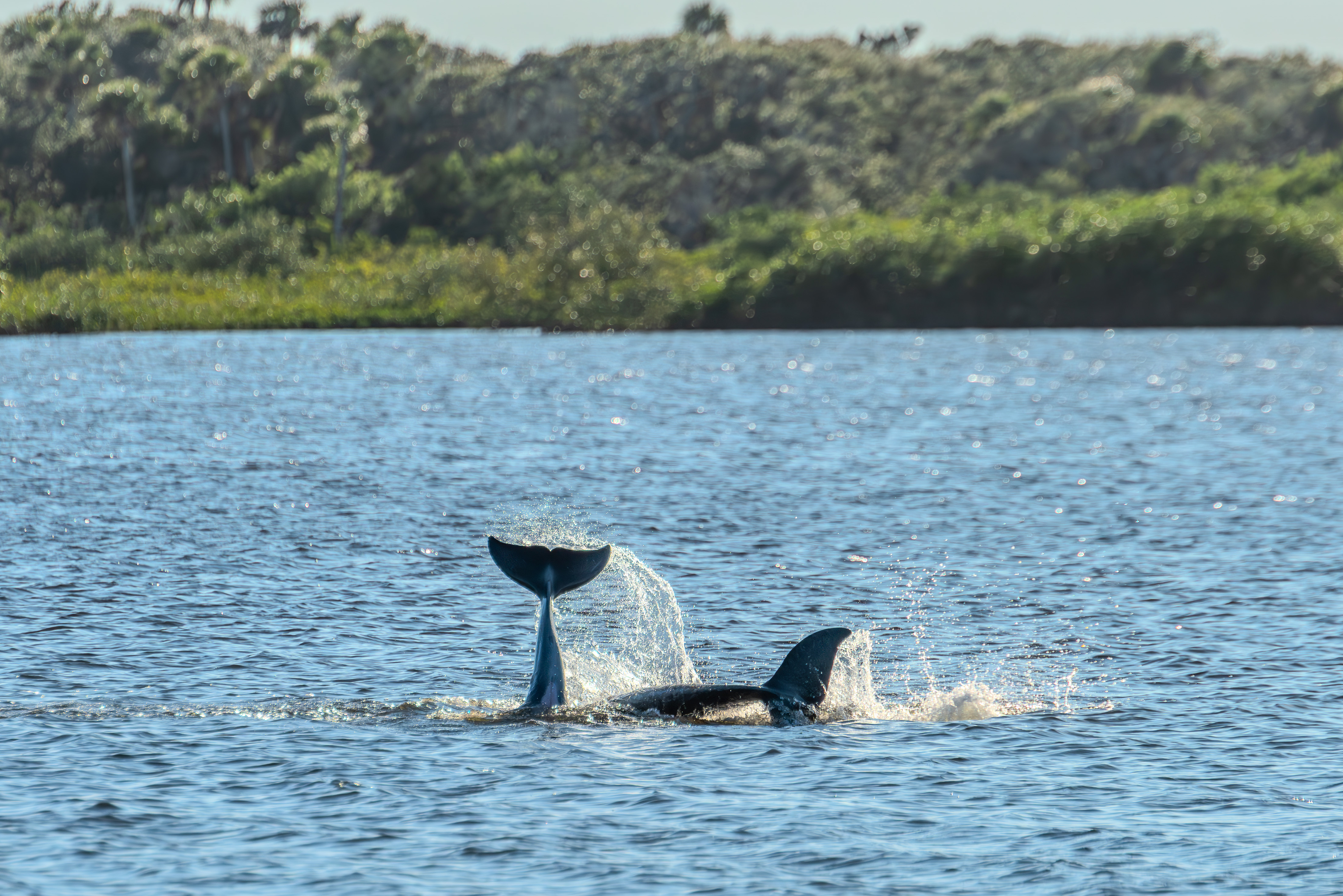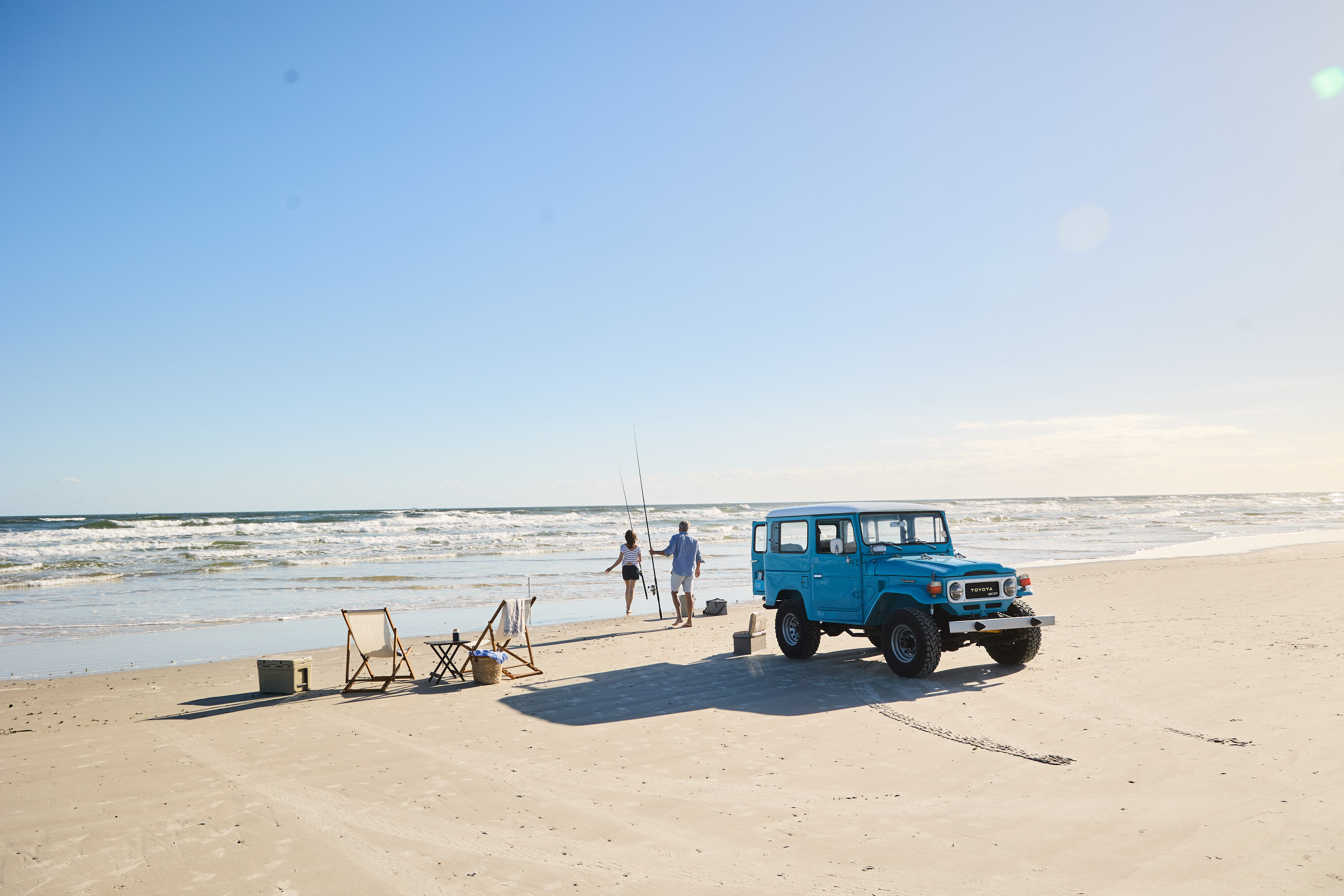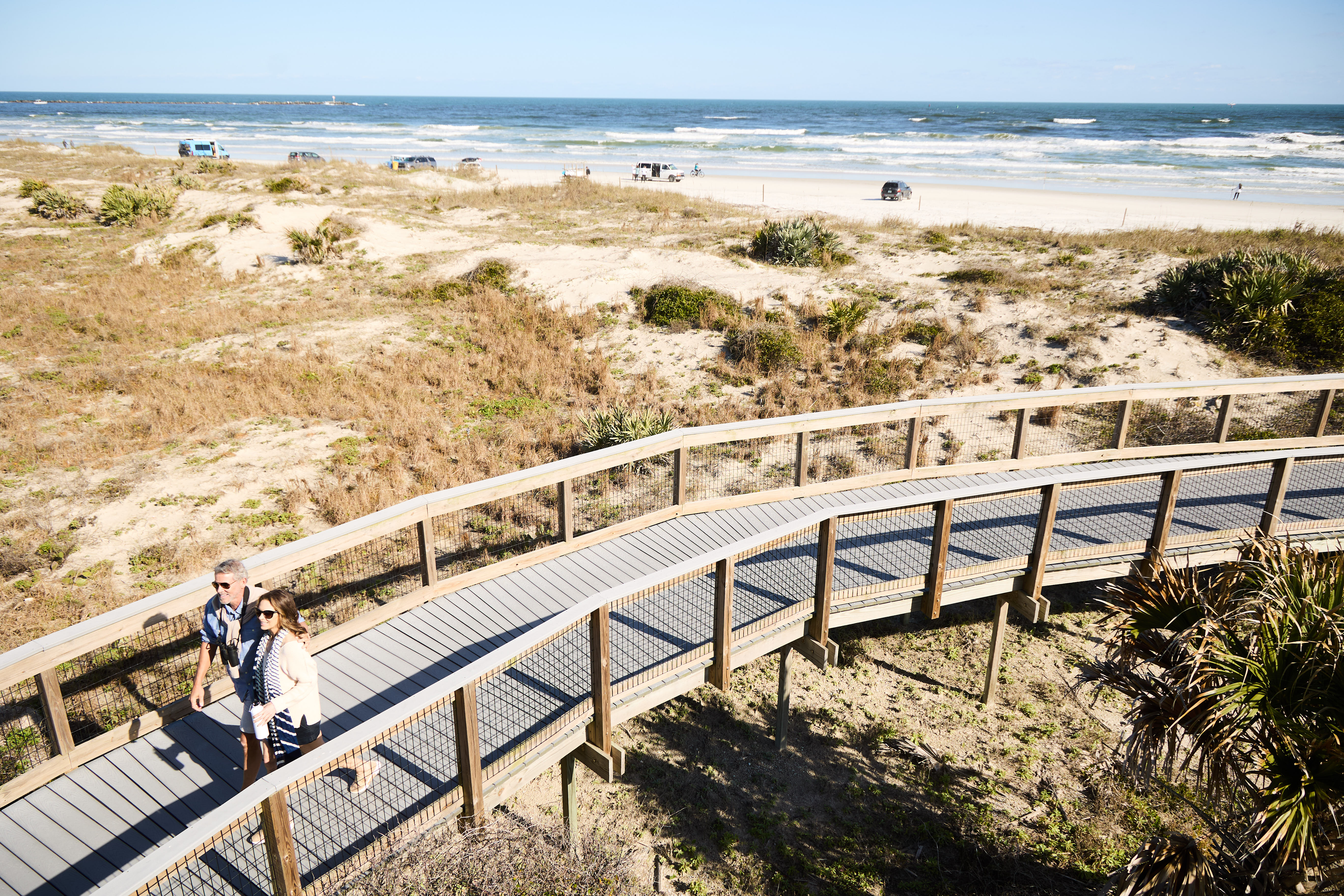Wild Encounters Await in the New Smyrna Beach Area

The New Smyrna Beach Area is home to a wide variety of wildlife, from wading and sea birds to playful dolphins in the blueways and manatees drifting through quiet inland waters. While some animals are easier to spot than others, knowing where they tend to gather can make your outing even more rewarding. Here are some of the top places to spot wildlife in and around the New Smyrna Beach Area, plus tours that bring you right to the action.
Magical Nights in the Canaveral National Seashore
 From May to October, the beaches of Canaveral National Seashore come alive at night with female sea turtles hauling themselves out of the surf to lay their eggs, followed by platoons of tiny sea turtle hatchlings hastily making their way to the safety of the ocean. The chance to experience this circle-of-life moment is unforgettable, and nighttime tours are offered through the national park. As with manatee viewing, several regulations surround these reptiles, most important of which is to use no artificial lights at night, to avoid confusing the turtles.
From May to October, the beaches of Canaveral National Seashore come alive at night with female sea turtles hauling themselves out of the surf to lay their eggs, followed by platoons of tiny sea turtle hatchlings hastily making their way to the safety of the ocean. The chance to experience this circle-of-life moment is unforgettable, and nighttime tours are offered through the national park. As with manatee viewing, several regulations surround these reptiles, most important of which is to use no artificial lights at night, to avoid confusing the turtles.
Beyond sea turtle nesting, the Canaveral National Seashore offers another kind of nighttime spectacular. During the same season, its warm waters glow with natural bioluminescence—each paddle stroke igniting a soft blue light. These guided pedal kayak tours launch from River Breeze Park in nearby Oak Hill, just 15 minutes south of New Smyrna Beach, and also include stargazing opportunities.
 Playful Dolphins at Every Turn
Playful Dolphins at Every Turn
Dolphins are a beloved sight in the New Smyrna Beach Area. Whether you're spotting them from the shores of Smyrna Dunes Park or out on a boat tour, their playful antics never fail to delight. Watching pods glide, leap, and interact in their natural habitat is a highlight for many visitors.
 Birdwatcher's Paradise
Birdwatcher's Paradise
Bird lovers are in for a treat, with species ranging from comically clumsy pelicans to elegant herons and even bald eagles. Doris Leeper Spruce Creek Preserve features a long boardwalk that leads to over 3 miles of nature trails—an ideal setting for spotting birds and, if you're lucky, deer or even a bobcat. The East Coast Regional Trail, accessible from Edgewater, also provides excellent birding along a scenic, multi-use path.
Gentle Giants of the Waterways
 One of the area’s most iconic residents is the manatee. These lovable creatures are often seen gliding through local waters, especially around Mary McLeod Bethune Beach Park in warmer months. While they're undeniably adorable, it's important to observe them from a distance—it’s illegal to touch or feed manatees, and violators face hefty fines.
One of the area’s most iconic residents is the manatee. These lovable creatures are often seen gliding through local waters, especially around Mary McLeod Bethune Beach Park in warmer months. While they're undeniably adorable, it's important to observe them from a distance—it’s illegal to touch or feed manatees, and violators face hefty fines.
Bonus Stop: Blue Spring State Park Just a short drive from the NSB Area, Blue Spring State Park in Orange City is a winter haven for manatees. During colder months, hundreds gather here to bask in the warm spring waters, making it one of the best places in the region for up-close manatee viewing (from a safe distance, of course).
Guides to Getting into the Wild
.jpg?width=526&height=296&name=DSC_6320-Enhanced%20(1).jpg) Although many can find wildlife on their own, the easiest way to spot animals is to participate in a guided tour. Several outfitters can be found in this area, and with years of experience in finding elusive creatures, their tours can make for lifetime memories.
Although many can find wildlife on their own, the easiest way to spot animals is to participate in a guided tour. Several outfitters can be found in this area, and with years of experience in finding elusive creatures, their tours can make for lifetime memories.
The Marine Discovery Center in New Smyrna Beach offers several outings led by certified naturalists, including a pontoon ride in the Indian Lagoon, where dolphins, birds, and other sea life live. Another business that gets visitors out on the water, this time in kayaks, is Viking Ecotours. Along with frequent sightings of dolphins, manatees, and colorful fish, they also offer seasonal bioluminescent tours for a one-of-a-kind nighttime adventure.
Many enroll in a scuba class with Sea Dogs Dive Center to get a peek at the underwater world in the New Smyrna Beach Area. From the fish that make the offshore coral reefs their home to sea turtles gliding blissfully through the water, it’s a perspective not soon forgotten.
The New Smyrna Beach Area supports a diverse ecosystem, with abundant wildlife that can be viewed from several easily accessible sites. Spotting wild creatures and taking time to observe their behaviors is a rewarding pastime for all ages—and when done respectfully, it also supports the principles of sustainable tourism, helping protect these natural spaces for generations to come.


%20(2).jpg)
